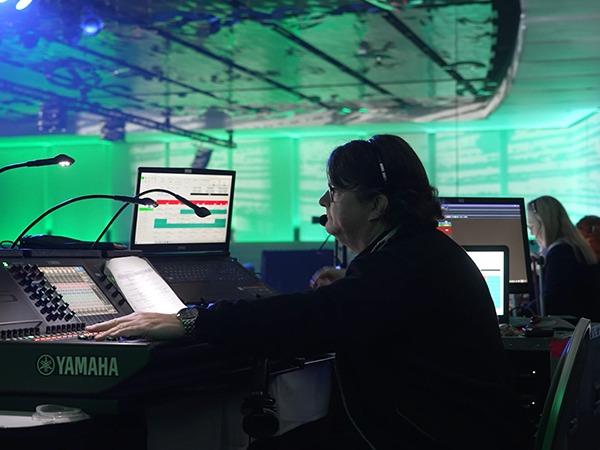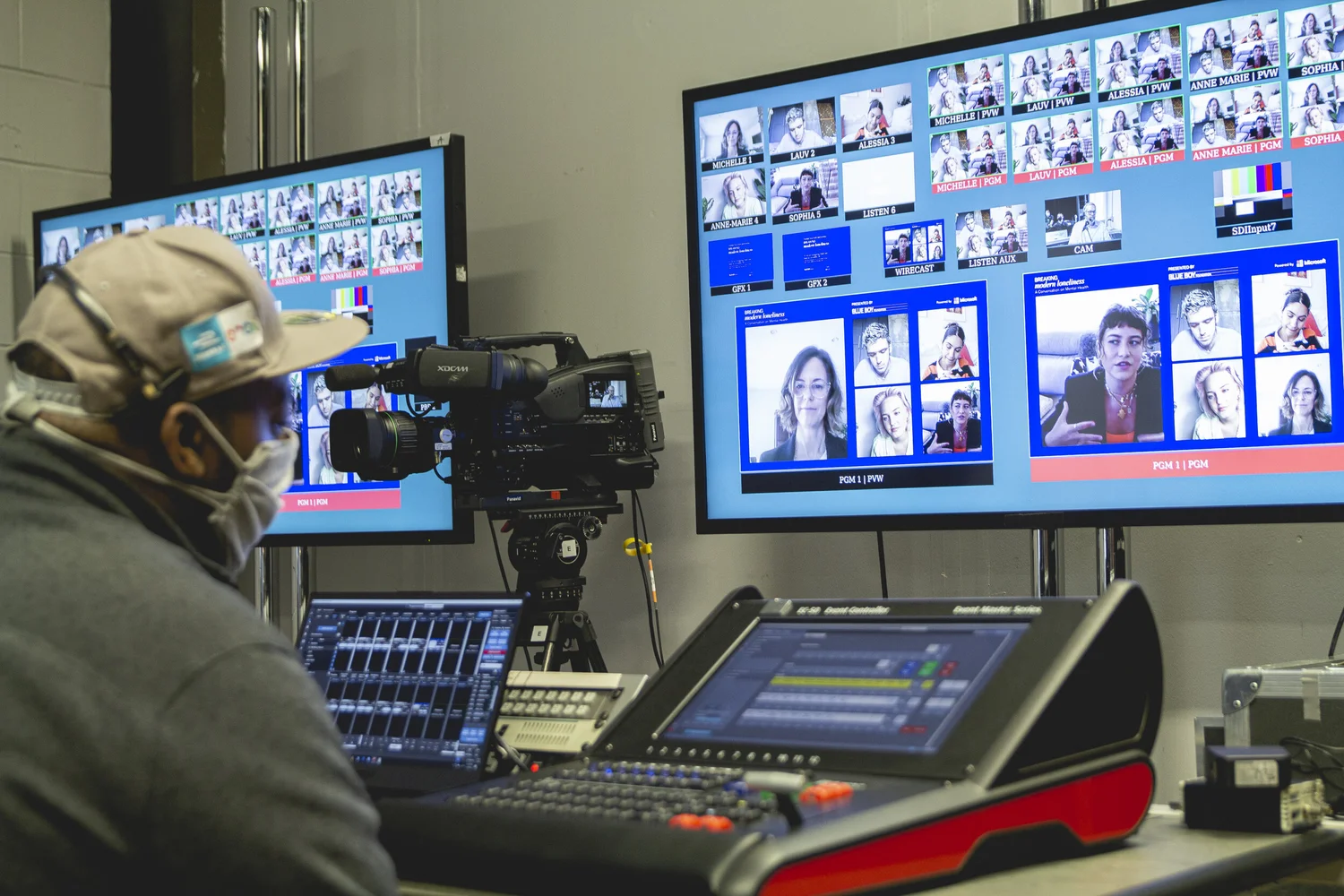Recognizing the Process of Live Event Sound Visual Production
The ins and outs of live occasion audio visual production need a mix of technological expertise and calculated preparation. As we explore the important elements that add to a successful event, it ends up being obvious that the foundation exists in both preparation and adaptability.
The Relevance of Planning
Efficient planning is vital for the success of any online event sound visual production. A well-structured plan offers as the structure, leading every aspect of the event from conception to execution. This process begins with specifying the occasion's goals, understanding the target audience, and establishing the wanted end results. Establishing clear goals makes certain that all staff member are straightened and can work towards an usual function.
In addition, thorough organizing is vital. A comprehensive timeline that consists of deadlines for each and every phase of manufacturing helps to alleviate potential dangers and ensures that all elements are addressed in a timely fashion. Efficient source appropriation is paramount; this includes not only the human sources yet additionally the budget, venue, and materials required for the event.
Ultimately, comprehensive planning not just improves the high quality of the audio visual experience yet additionally imparts confidence among the group and stakeholders, leading to a smooth and successful occasion. Without this structure, also the most ingenious ideas can fail, highlighting the indisputable significance of planning in real-time event audio aesthetic production.

Secret Tools and Technology
A successful online occasion sound aesthetic manufacturing counts greatly on the appropriate tools and modern technology to bring the vision to life. Vital elements consist of stereos, aesthetic screens, lights, and control systems, each playing a crucial duty in making certain a smooth experience.
Stereo contain microphones, speakers, and mixers that help with clear noise shipment. Premium microphones catch instruments and vocals precisely, while mixers enable for real-time sound adjustments based upon the occasion's dynamics. Aesthetic display screens, consisting of projectors and LED screens, are important for communicating information and boosting target market interaction. The choice of display modern technology can considerably impact the total visual and performance of the discussion.
Lights equipment is one more crucial aspect, as it establishes the mood and highlights crucial minutes throughout the occasion. Options vary from stage lights to smart lights systems that can be configured for particular effects. Control systems incorporate sound, visual, and lighting aspects, guaranteeing natural operation throughout the production.
Buying trustworthy equipment and recognizing the newest technological developments can considerably improve the high quality and influence of real-time event audio aesthetic productions, ultimately contributing to a remarkable target market experience. Live Event Audio Visual Production.
Duties and Obligations
Effective live event audio visual manufacturing needs a well-defined framework of roles and duties among staff member. Each function is essential to make certain smooth procedures and attain the desired result.
The audio engineer is accountable for handling sound top quality, including microphone positioning, sound blending, and making certain that all audio elements are synchronized with visual material. The lights designer creates an atmosphere that improves the event's mood, choosing suitable fixtures and programs lights signs to enhance the efficiency or discussion.
A video More Help clip technician manages all visual components, including video camera procedure, video clip changing, and forecast monitoring. They function very closely with the supervisor, that works with the overall production, making real-time decisions to make sure that the occasion flows perfectly.
On top of that, an impresario is important for orchestrating on-site logistics, making certain that all employee are educated of hints and timing. Producers manage budgeting and organizing, making sure that all facets of the occasion align with the customer's vision. Last but not least, technical assistance staff offer important assistance in fixing any devices problems that might emerge. This collaborative framework makes it possible for a successful audio visual manufacturing, aligning each participant's experience towards a combined objective.
Execution and Live Production
Performing an online event needs careful planning and real-time versatility to make sure all components integrated seamlessly. The execution phase is where the foundation laid during pre-production is used. Trick to this process is the sychronisation of different technical teams, including audio designers, lighting technicians, and video clip manufacturing staffs. Each group needs to be lined up with the event's vision while keeping clear interaction to attend to any type of unanticipated difficulties that occur during the event.

Furthermore, target market involvement is paramount. The production team need to continue to be vigilant, adapting to audience responses and responses. This responsiveness improves the total experience, permitting for a vibrant ambience that resonates with guests. Ultimately, successful execution culminates in a cohesive online event that captivates the audience and fulfills the customer's goals.
Post-Event Analysis and Comments
Following the verdict of an online event, carrying out a complete post-event assessment is important for recognizing staminas and areas for enhancement. This evaluation procedure ought to entail event feedback discover this from different stakeholders, consisting of guests, occasion staff, and customers (Live Event Audio Visual Production). By utilizing studies, interviews, and casual discussions, coordinators can get important understandings into the total experience and performance of the audiovisual production
Assessing technological aspects such as sound top quality, visual quality, and tools integrity is vital. Additionally, examining the control between the manufacturing group and other divisions aids to pinpoint logistical challenges and successes. Identifying any type of issues come across during the occasion enables teams to establish approaches for reducing similar issues in future manufacturings.
In addition, compiling and evaluating responses facilitates the recognition of standout elements, such as engaging presentations or seamless transitions, which can be highlighted in future events. The post-event assessment not only offers a roadmap for enhancement however likewise promotes a culture of continuous knowing within the team. Eventually, this reflective practice enhances the quality of future real-time events, guaranteeing that they exceed or meet target market assumptions and provide an unforgettable experience.
Final Thought
In verdict, efficient real-time event sound visual production demands extensive preparation, competent coordination among varied roles, and the combination of innovative innovation. Inevitably, a well-executed audio visual method significantly improves target market involvement and contributes to the general success of real-time events.
The ins and outs of real-time occasion audio visual manufacturing demand a blend of technological competence and strategic planning.Reliable planning is necessary for the success of any type of online occasion sound aesthetic production. Without this foundation, even the most cutting-edge ideas can falter, underscoring the indisputable value of preparation in real-time occasion sound aesthetic manufacturing.
Each team must be aligned with the event's vision while preserving clear communication to attend to any kind of unpredicted obstacles that arise during the event.
In conclusion, effective live event audio visual production requires detailed preparation, experienced sychronisation amongst diverse functions, and the assimilation of sophisticated technology.